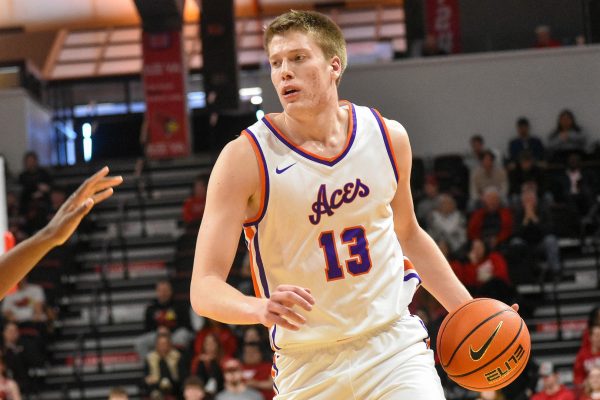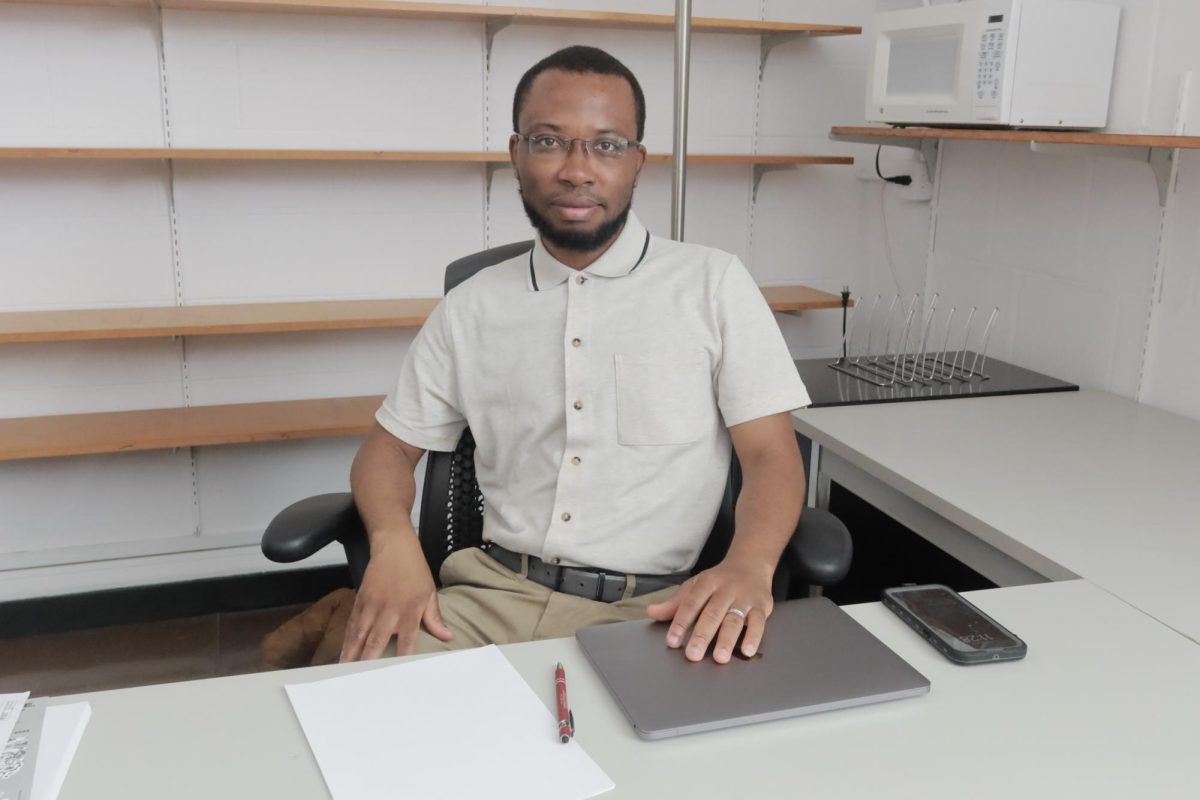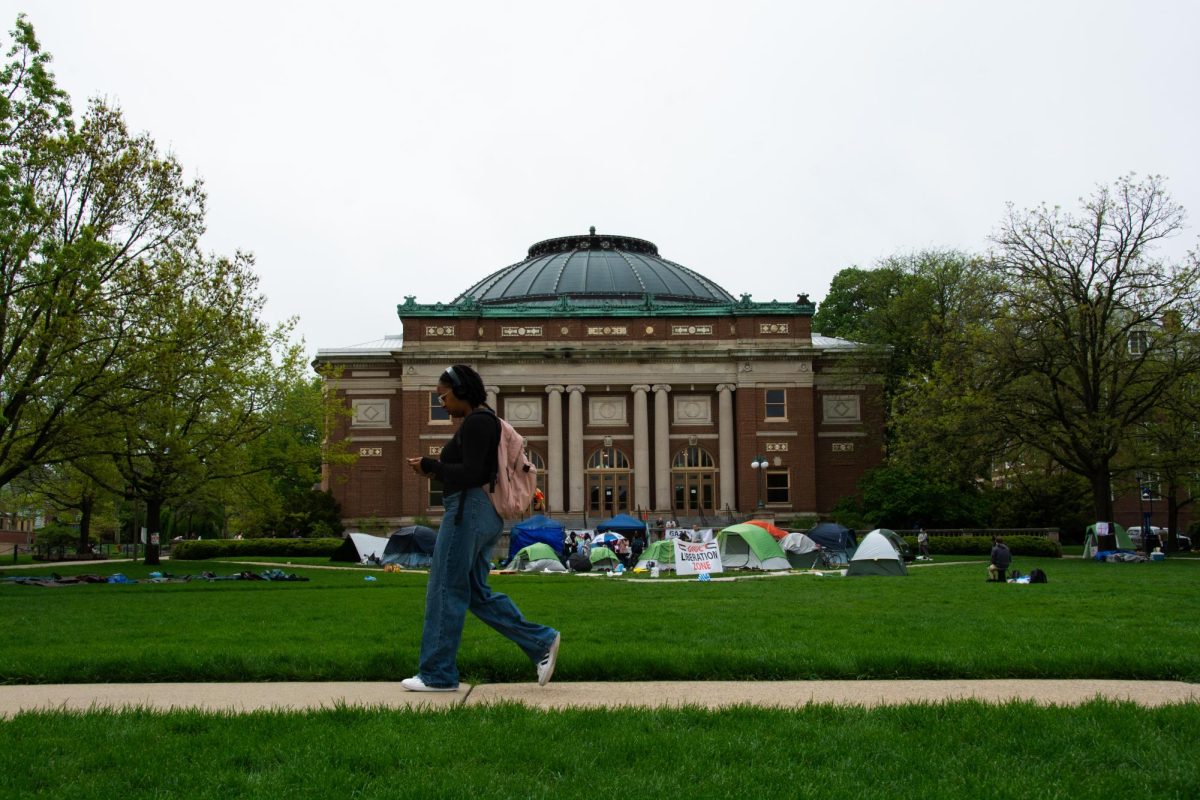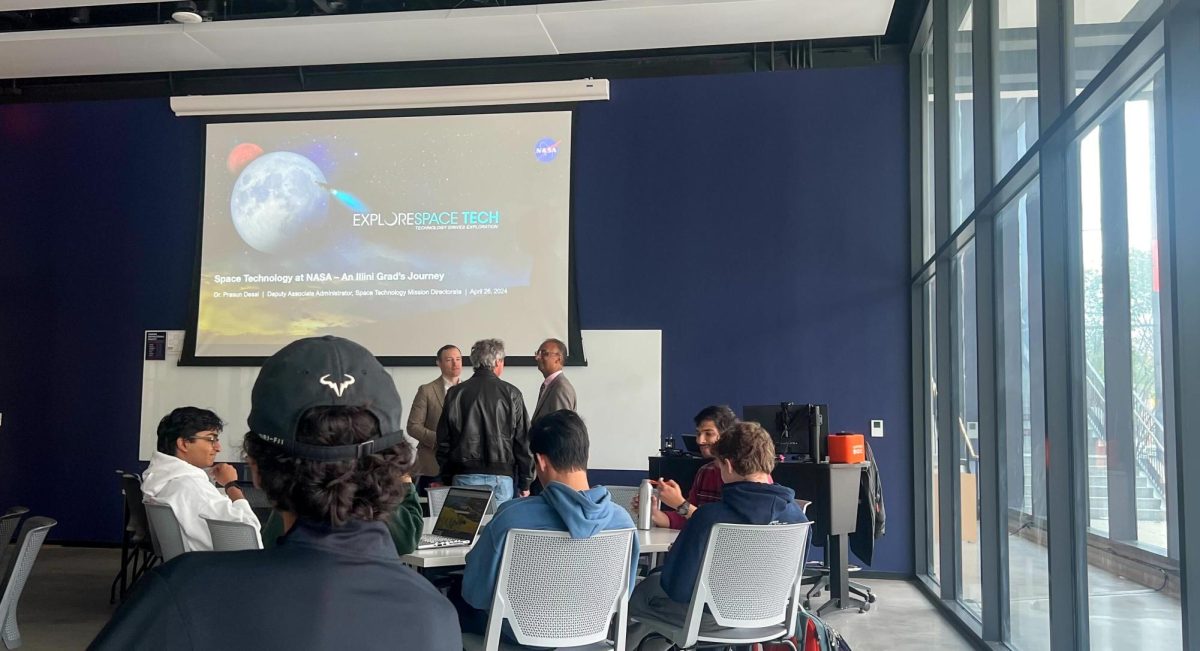Hermann von Hesse, professor in FAA, was recently awarded the 2024 American Council of Learned Societies Fellowship for his research project, “Love of Stone Houses: Urban Merchants, Ancestral Spaces and Sacred Objects on Africa’s Gold Coast.”
von Hesse is one of 60 recipients of this fellowship. ACLS will support untenured scholars like von Hesse for six months to a year who are devoted to full-time research by funding their work related to any time period, world region or methodology in the humanities. The Daily Illini sat with him to discuss his recent achievement.
This interview has been edited for length and clarity.
The Daily Illini: How do you feel about receiving this fellowship?
Get The Daily Illini in your inbox!
Von Hesse: It feels good because it’s very competitive. When so many people who are equally as good are applying for these fellowships and you get a chance to win that — it feels special and means that my work is being recognized and getting the attention it needs.
The DI: Could you tell us more about the project, “Love of Stone Houses,” that you are currently working on? Why this project?
von Hesse: I am studying stone houses, urban merchants and sort of material culture on Africa’s Gold Coast. For this specific project, I’m really interested in how West Africa increasingly was incorporated into the Atlantic world, making them look more towards the Atlantic and less Saharan. I was also interested in the transition from the slave trade to so-called legitimate commerce, in which the trade-in crops like industrial raw materials, oil, palm and rubber superseded that of the trade in human beings. My specific contribution to that area was how merchants on the Gold Coast began to use stone houses rather than captives as collateral to secure important merchandise like European and Asian textiles. At this point, Europe and also North America both thought it was wrong to use human beings as collateral. Britain abolished its slave trade in 1807 and America in 1808. Generally, it was illegal to export captives from Africa to the US or to British-controlled islands in the Caribbean. That was why there was a shift to stone houses as collateral rather than human beings.
But then, culturally, this also caused a problem for Africans on the Gold Coast because stone houses were the physical manifestation of the family. When family members died, they were buried in the house and the courtyard where these were considered ancestral spaces. Also, because houses were supposed to be permanent, it’s not something that you bought and sold as collateral for some loans or credits. It became a dilemma because Europeans and North Americans were basically saying you’re welcome to collateralize all of your ancestors. So, there’s a sort of mismatch between European or Gold Coast African expectations and ideas about value.
This kind of dilemma transition from slave trade to the legitimate commerce became what I’m interested in. Although scholars have discussed this transition a lot, they are interested in how Africans were able to transition from the slave trade to the trade in oil, palm oil, rubber and timber, and nobody has really talked about real estate — the buying and selling collateralizing of real property of houses in this period of transition. Thus, I’m more interested in how merchants used stone houses as collateral so they could participate in global commerce.
The DI: What challenges did you encounter while doing this research project?
von Hesse: I had to learn Danish because Gold Coast merchants were trading with other merchants from different European nations, including the Dutch, Danish, English and Germans. They became the most important in the 18th century, so I had to navigate between all these different groups. Also, I already have the Ghanaian language, so that was much of a challenge for me to learn another one. The handwriting was sometimes terrible as well.
The DI: Is there another story behind this research project?
von Hesse: I was born in a town called Osu, which is the suburb of Accra. Historically, Osu was also known as Danish Accra because the Danish court customs bond was built in that time there. I’m of Danish, Scandinavian and German descent, as they would marry local women. Thus, interracial marriages were very crucial to the slave trade for Gold Coast. I grew up living in stone houses. One of these stone houses was built by Joseph Wulff. Wulff went to the Gold Coast decades after the slave trade was over and was there between 1836 and 1842. He built this stone house and it still stands. I think the only thing that has changed over the years is the roofing. It happened to be my childhood playground where we played soccer and football, and there were these burials in the cellar. When Wulff’s wife died, that became my first time seeing a home burial. And it wasn’t until I got to college that I realized this Wulff house has become one of the most important case studies on interracial conjugal relations, and then tied with the Atlantic world.
When we say Atlantic Wall, what we mean is that the Atlantic was like a pond where it connected Africa to the Americas and to Western Europe. They form part of the trade triangle, so that’s what we call the Atlantic world. Therefore, I didn’t realize that my own childhood playground had become so important in studies about race, interracial conjugal relations, the slave trade, Atlantic commerce and studies that connects Africa to the Americas and to Western Europe. That was what got me into my projects. Also, it really stands out as a journey to know more about my heritage before blossoming into this hard academic pursuit.
The DI: Do you have any project in mind that you would like to research after “Love of Stone Houses?”
von Hesse: “I’ve been interested in fashion, specifically pre-twentieth-century African and Gold Coast fashion. When we talk about African fashion, it’s just the 20th century. Anything that predates that is either textile trade or tribal costumes. Also, some of my ancestors actually pioneered photography in Ghana, so I was able to see all these portraits and pre-20th century people nicely dressed in textiles that they imported from all over the world, particularly from South Asia. Africans were buying and importing these textiles through European vessels. I got interested in talking about fashion rather than the textile trade, and it also went to show how Europeans were not the only ones going around influencing indigenous cultures. It gives us the opportunity to rethink global cultural exchange because South Asian textiles were central to the slave trade. So, I was really interested in all of these.
Thankfully, a lot of the European archives have catalogs of all the textiles that they were brought in, so we are able to see what kinds of specific textiles that were being traded. With all these, it’s like a rich archival source to really understand global trade and cultural exchange, just using the Gold Coast’s case.











